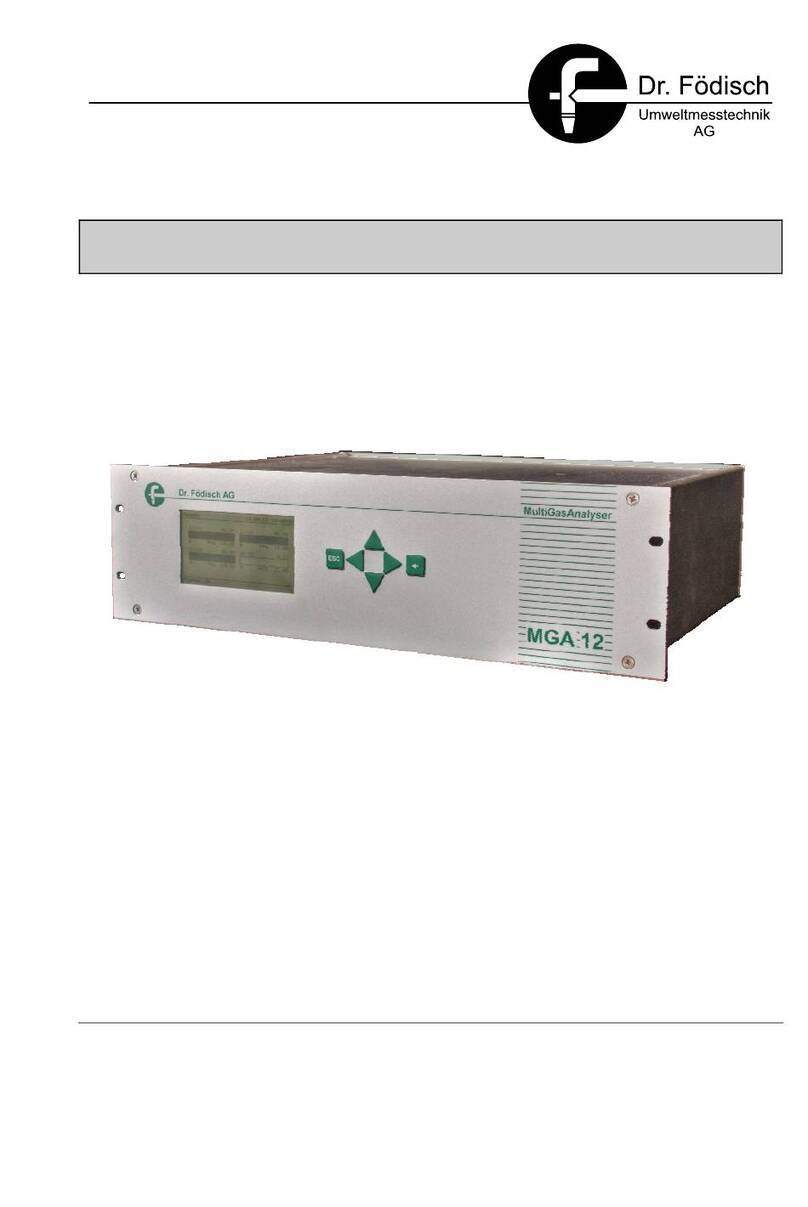
Operation Manual MCA 10 HWIR
7Placement and mounting....................................................................................................... 37
7.1 Placement................................................................................................................................. 37
7.2 Mounting................................................................................................................................... 37
7.3 Placement and mounting of additional devices........................................................................ 37
8Commissioning....................................................................................................................... 38
8.1 Commissioning of MCA 10 HWIR............................................................................................. 38
8.2 Test gas provision..................................................................................................................... 39
8.3 Software installation.................................................................................................................. 40
9Operating................................................................................................................................. 41
9.1 Display and operating elements............................................................................................... 42
9.1.1 General screen design.............................................................................................................. 42
9.1.2 Display and operating elements within menus......................................................................... 43
9.1.3 Display “data transfer” .............................................................................................................. 45
9.2 Menu structure.......................................................................................................................... 46
9.3 Password levels........................................................................................................................ 49
9.4 Main menu................................................................................................................................ 50
9.4.1 Change language...................................................................................................................... 51
9.4.2 Input password.......................................................................................................................... 51
9.5 Measurement............................................................................................................................ 52
9.6 System control.......................................................................................................................... 54
9.7 Diagnostics ............................................................................................................................... 55
9.8 Messages.................................................................................................................................. 56
9.9 Auto calibration......................................................................................................................... 58
9.10 Calibration................................................................................................................................. 59
9.11 Configuration............................................................................................................................. 62
9.12 Service mode............................................................................................................................ 64
10 Maintenance/Upkeep.............................................................................................................. 65
10.1 Exchange injector screwing-in.................................................................................................. 66
10.2 Exchange sinter metal filter of cuvette / exchange gaskets at cuvette inlet block.................... 66
10.3 Exchange screwing-in with nozzle at gas distribution block..................................................... 67
11 Error search and failure clearance........................................................................................ 68
11.1 Service qualification of the specialised personnel.................................................................... 68
11.2 Displaying of current messages and clearing of failures.......................................................... 69
11.2.1 Messages “failure” .................................................................................................................... 70
11.2.2 Messages “maintenance” ......................................................................................................... 79
11.2.3 Messages “maint. req.”............................................................................................................. 81
11.2.4 Info message ............................................................................................................................ 88
12 Shutdown and Disposal......................................................................................................... 89
12.1 Shutdown.................................................................................................................................. 89
12.2 Disassembling........................................................................................................................... 90
12.3 Storage ..................................................................................................................................... 90
12.4 Disposal.................................................................................................................................... 90
13 Technical data......................................................................................................................... 91
13.1 Multi component analyser MCA 10 HWIR................................................................................ 91
13.2 Measuring ranges of MCA 10 HWIR ........................................................................................ 93
14 Spare and wear parts ............................................................................................................. 94





























